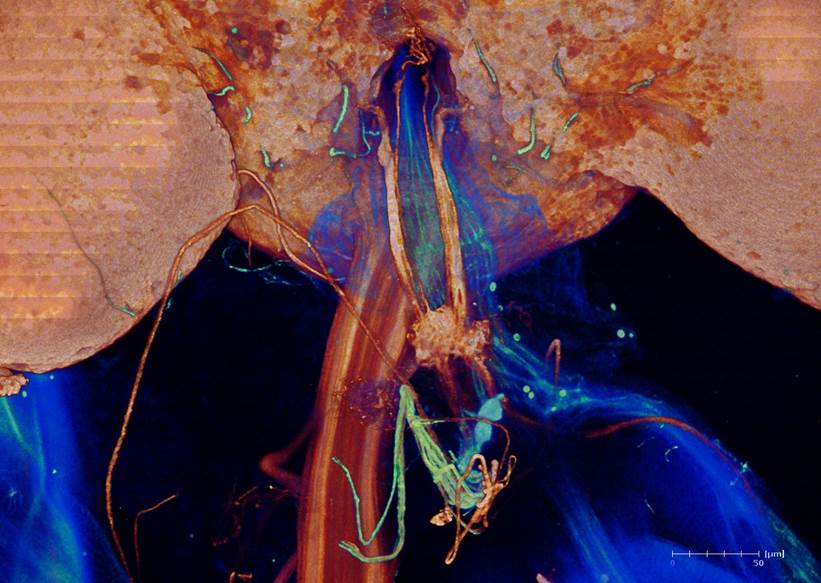A stomatogastric system can be found in both vertebrates and insects, with common, fundamental functions for food intake and processing.
Aim
Our knowledge about the adult fly peripheral nervous system is limited, despite its importance in the regulation of prandial processes like food intake continuation, termination and food sorting.
How
In this project we examine the anatomy and function of the about 50 cells of the stomatogastric ganglion in the adult vinegar fly. Individual neurons and their innervation are visualized by suitable driver lines, counterstained using immunohistochemical methods, and subsequently reconstructed in 3D. In parallel, we examine their prandial functionality by optogenetic stimulation or blockade.
Goal
Our goal is to identify which stomatogastric cell contributes to which part of prandial regulation, and to put this process in context between flies and vertebrates.
Publikationen
The prandial process in flies
Mahishi D, Huetteroth W.
Curr Opin Insect Sci. 2019 Dec;36:157-166.
DOI: 10.1016/j.cois.2019.09.004
